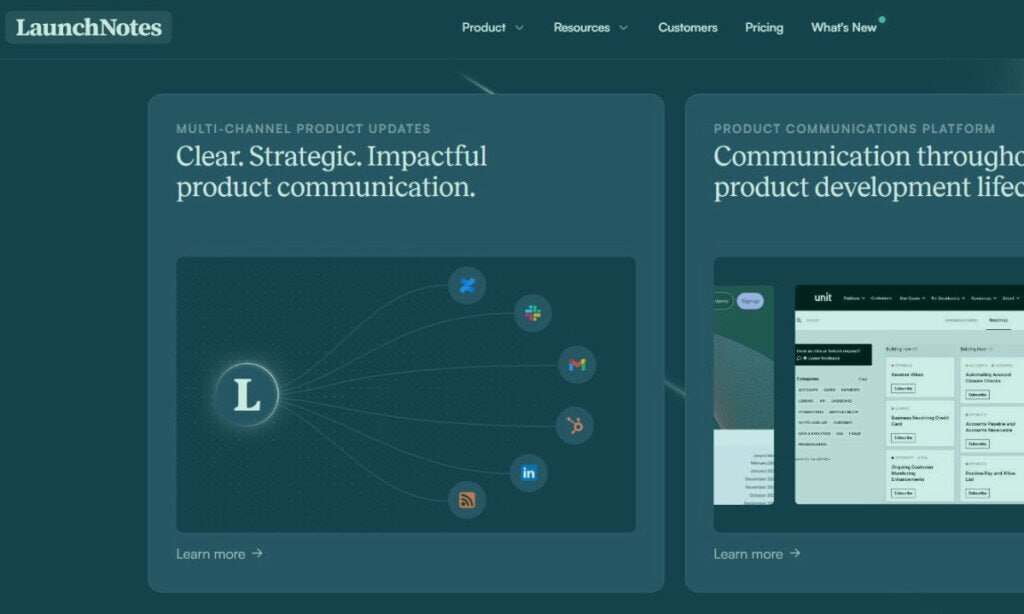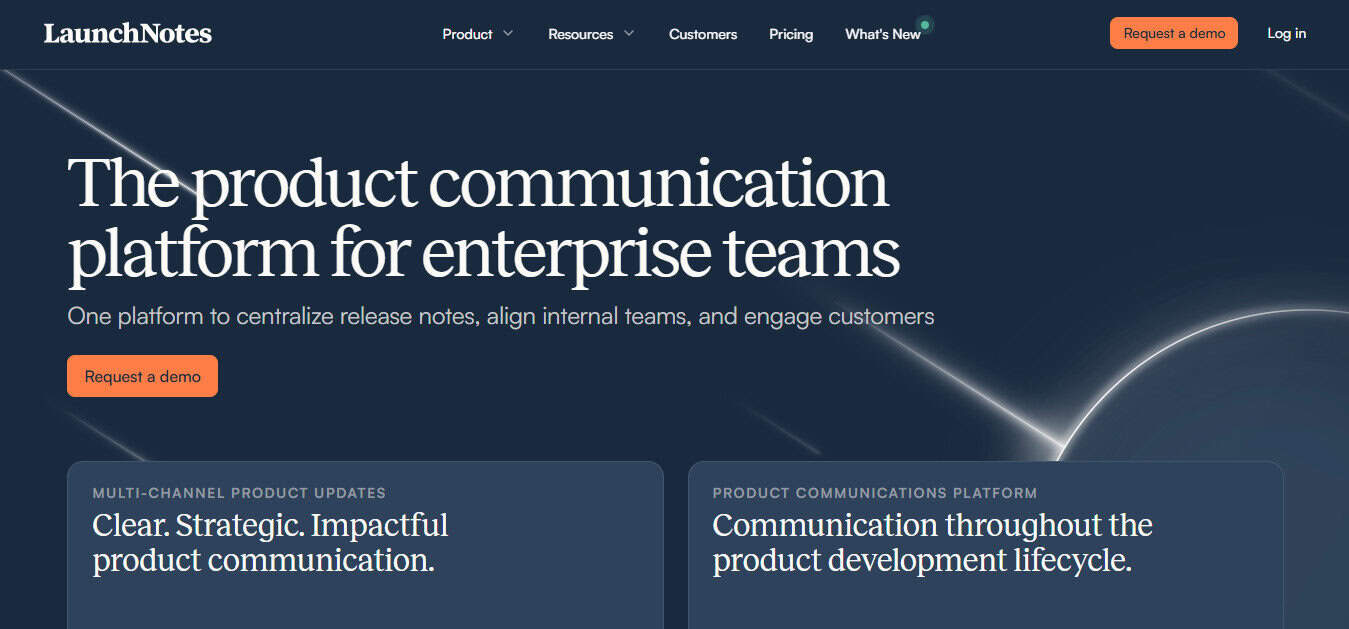Last Updated on October 3, 2025 by Ewen Finser
Looking for new ways to optimize roadmap management and release notes, changelogs, and general announcements to various teams and stakeholders can be challenging.
I tried out LaunchNotes to see how it stacks up against similar tools, and I’ve been thoroughly impressed by how well it delivers a wide range of features I look for in a tool like this.
What is LaunchNotes?
Platforms like LaunchNotes help companies create, manage, and communicate product changes and updates via release notes. This helps align internal and external teams, engage customers, and centralize communications and feedback.
TL;DR: I love LaunchNotes, and you can tell right away how ease of use and customer experience are a priority for them. It’s easy and quick to fully customize major features on the platform, which means you can send out fully branded release notes or changelogs within a day!
This is an excellent tool for organizations that need to carefully manage product updates and segment audiences for specific updates, both internally and externally. It also handles user feedback, requests, and ideas, and helps organize user feedback into product roadmaps seamlessly.
The only oversight is that a tool at this price point and size is lacking workflow automation and some customization options for visibility. Overall, it’s hard to fault!
LaunchNotes takes the busywork out of product updates. Paste in your notes or tickets and get a structured announcement draft instantly. It’s designed for teams that want to save time, segment updates, and keep communication consistent across every channel.
LaunchNotes Deep Dive Into Some of My Favourite Features
1. Overall ease of use and guided onboarding
Anyone who works in the product or software space will know how most people prefer to stick to platforms and tools they’re already familiar with. The main reason for resistance to change is the steep learning curve of a new system and learning how to use new features.
I love that LaunchNotes has created a way to reduce the friction that comes from learning a new platform.
Guided step through setup:
It’s easy to navigate through the onboarding; simply clicking on each step opens a new page where you can complete the required or suggested items. Simple things like that can make it easier to sell a product to teams who resist change. It also makes a huge difference for less-technical individuals who need a guided setup process. Once each step is complete, the tick box is automatically selected, and you can move on to the next item.
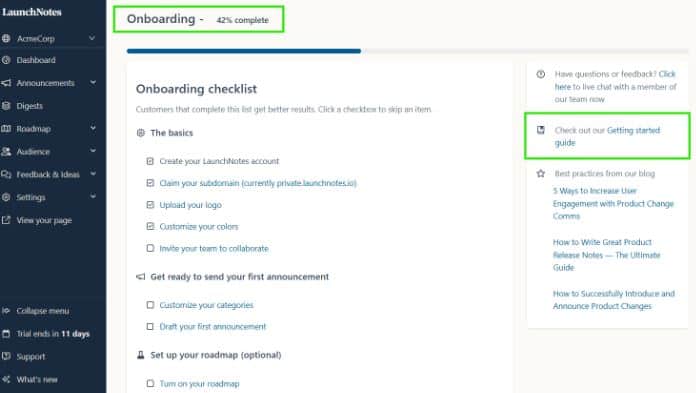
2. Roadmap setup features, likes, and dislikes :
Roadmap settings:
Part of the onboarding steps includes the roadmap setup, which takes just a few minutes to configure.
My likes:
- As you progress through setting up various features, you’ll notice how much effort has been put into ease of use and great UX.
- I’m a fan of toggle icons and drag and drop features; it’s quick, user-friendly, and makes what could be a cumbersome process smooth and straightforward.
- You’ll also be able to preview your roadmap on your branded LaunchNotes site before continuing, which is a great way to review the layout for optimal visibility before publishing.
- Stage-dependent (such as when a task is completed) email updates can also be set up here, which is a great value-add for keeping users informed with ease.
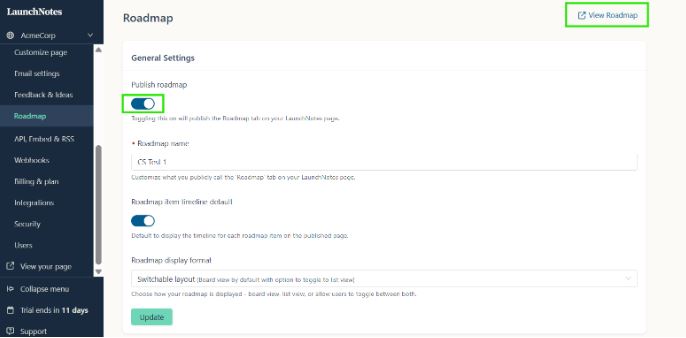
My dislikes:
- I’d love to see some automation features here. If you’re setting up stages, it would be great to be able to customize workflow dependencies so that roadmap items need to be moved through predefined stages based on each step being completed or approved.
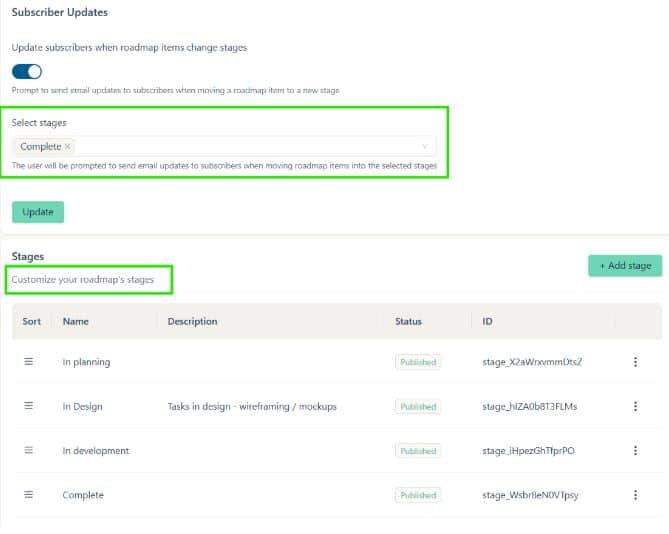
Roadmap items:
My likes:
- Once your settings are updated, I found it really easy to start adding items to your roadmap.
- You can use drag and drop to manage your workflow and add details using your prepopulated content for categories, which are arranged based on your needs. In my example, categories refer to teams or environments that would be affected by changes.
- As a note – You can share public or internal roadmaps with notifications and links that will direct users to specific documents. This is ideal when you need to share split views depending on your audience.
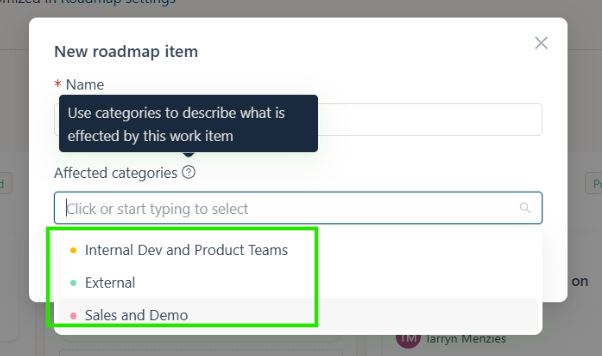
Moving items through my workflow was simple, and I chose to be able to toggle between Kanban board and list views, which I love:
Kanban view:
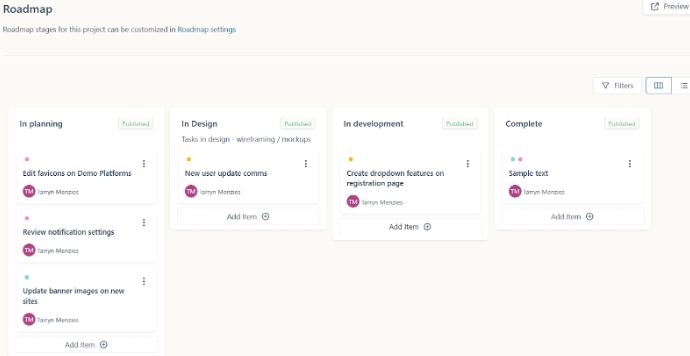
- There is also an option to preview the external-facing roadmap on your branded site, which I think is a nice way to split view between internal teams, stakeholders, or customers. I love tools that allow this level of transparency to ensure that users can get product updates as they require. There is also an option for users to subscribe to updates.
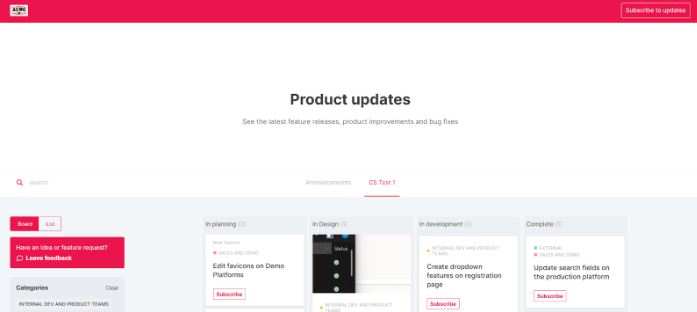
- The list view shows you additional details that I wish would show on the kanban view, such as labels.
- Hovering over tags or categories will show you which colors are associated with the items you’ve set up
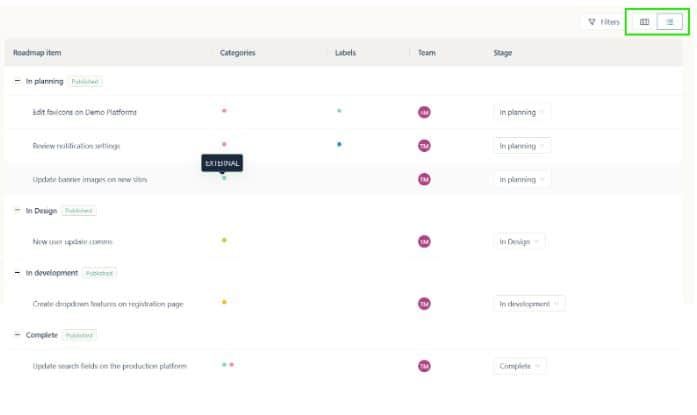
- Labels can be added to items to reflect what they relate to. Labels can be customized in the same way that categories can, with specific color codes, unique IDs, and API slugs.
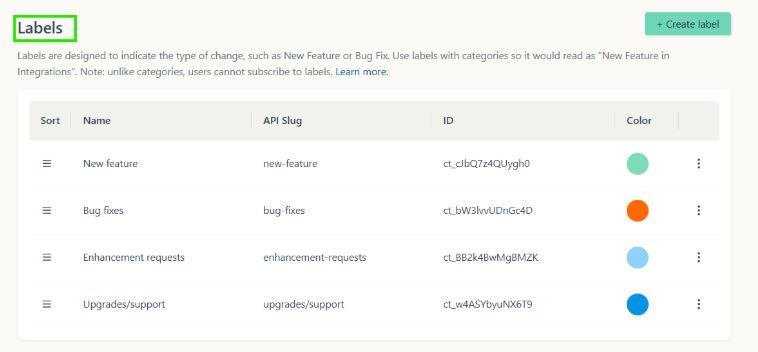
My dislikes:
- Having no clear labels or goal dates on the roadmap Kanban view (internal or external) isn’t ideal, and I’d love to have that type of information surfaced when I’m scanning through a roadmap. Things like bug fixes may be important and missed.
- The projected release date field is also not visible on items via the board or list views, which I find frustrating. There seems to be an option to enable this visibility, but it doesn’t show on the work item.
- When updating information, there is no button to “save” aside from “add update” and there is no popup or notification that confirms your information has been updated, which I’d like to see.
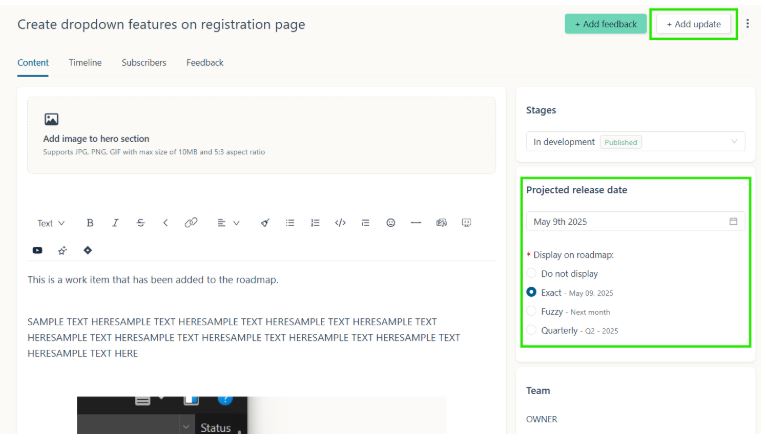
3. Changelog & release notes functions (with built-in AI-assisted content generation)
I love everything about this feature. Announcements are seamless, and you can customize, schedule, and create professional-looking emails in minutes.
- Once you’ve fully customized your email comms (including banner images, footers, hex color palettes, etc), you’ll be able to create announcements.
- I love that they already have pre-set templates you can make use of and edit so that you’re not starting from scratch
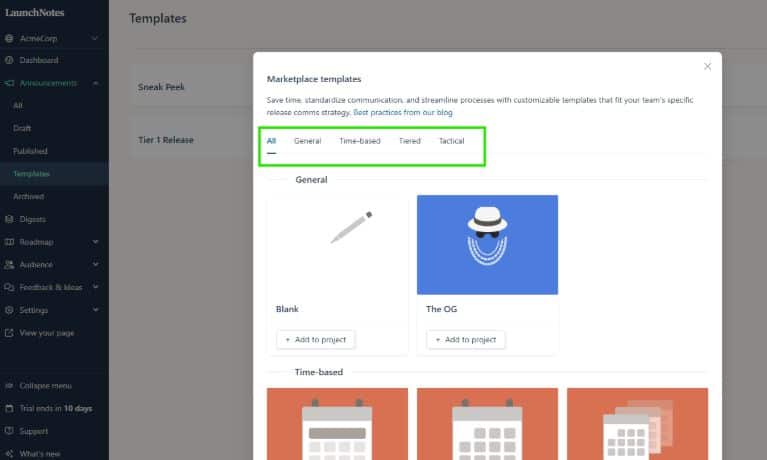
- Digest feature: You can group a set of announcements if you’re releasing multiple updates that need to be sent to users, which saves a lot of time when needing to update your audience on a number of updates.
- Announcements can be executed in minutes using the pre-set templates that you’ve added to your library. You’ll also have a view of previously sent announcements, including open rates and click-through tracking.
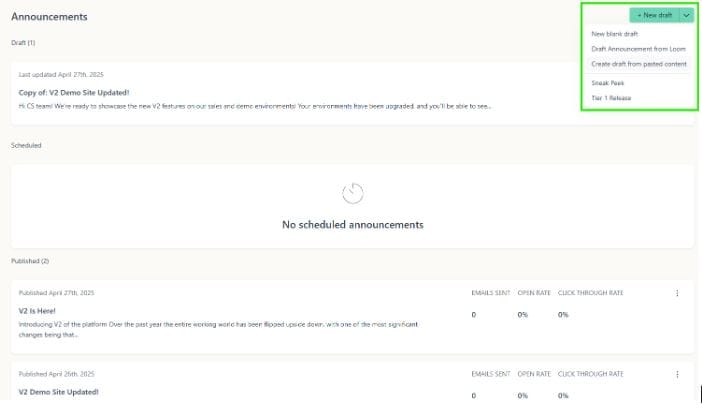
- Making use of the scheduled announcements feature is a lifesaver when dealing with multiple time zones and staggered updates:
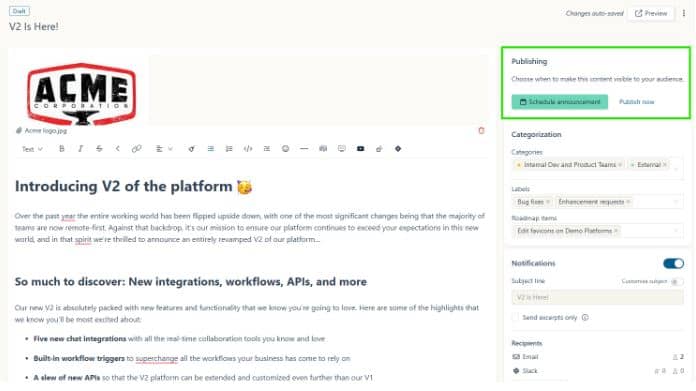
- The announcement schedule time and date are also set to your region, which is useful, but remember to cater releases for other time zones and countries to increase open rates. This is super convenient with Launchnotes as they give you multiple options from the drop-down menu:
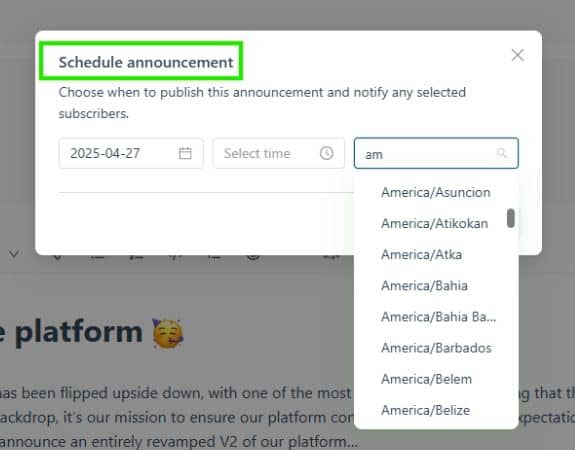
- Once you’ve drafted the content, you can tweak it with additional features like media, embedded YouTube links, and, more recently, the AI feature to help you ensure your content looks polished and eye-catching.
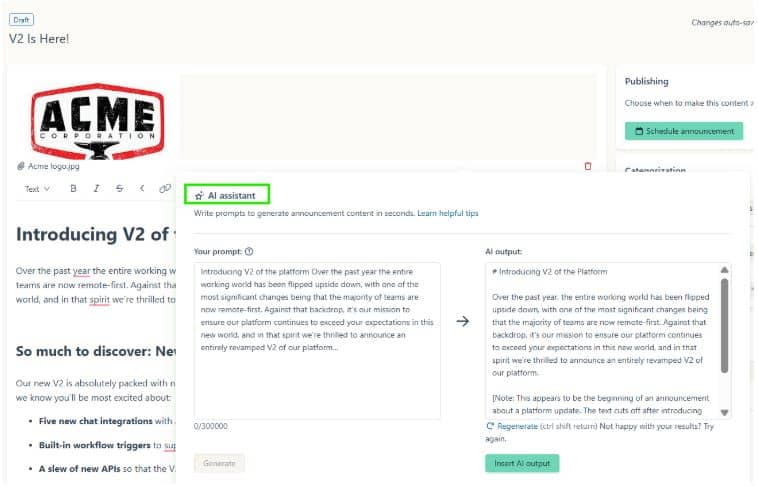
- Multi-channel announcements are available, which I love. The integrations on LaunchNotes with email, Slack, or in-app widgets allow you to distribute important updates via a wide range of methods, so that stakeholders receive updates on their preferred channels.
- User/audience segmentation is available and is selected based on your predefined categories, allowing you to select multiple categories and labels relevant to your announcement.
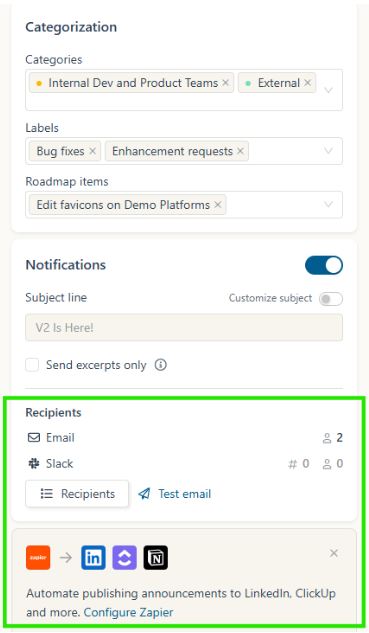
Once the communications are sent, users will receive great-looking, custom-branded updates with a link to take them to the external page. Users can also leave feedback on the announcement, helping you to centralize feedback without the use of multiple channels.
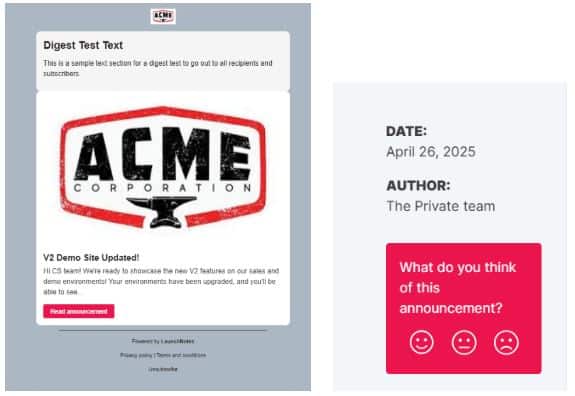
4. User feedback and idea gathering:
I personally love this feature! It takes the hassle out of manual data entry or using disparate channels to collect information, which is one of the most common issues with user feedback.
- LaunchNotes has cleverly added a section where users viewing the roadmap or announcements page can add feedback. I love tools that let me tie up loose ends and link relevant feedback points to my roadmap with ease.
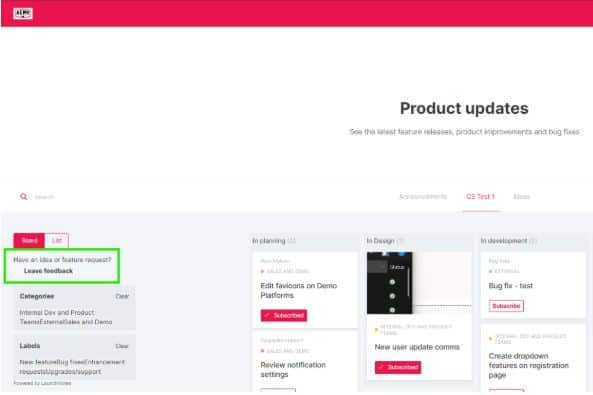
- You can import, export, and manage user feedback directly in the app.

- Organizing feedback takes just a few minutes, and you can add ideas or feedback directly to your roadmap or announcements page, and once published, this will appear on the external site.
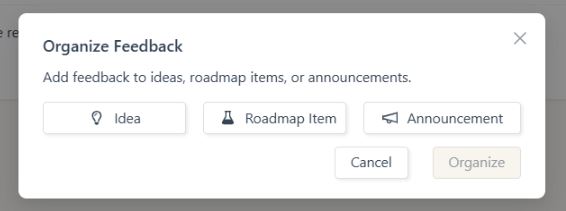
- Once published, you can gather votes directly from users or stakeholders, which I love. I would like a downvote option, ideally, as users cannot leave comments. It would help with collating feedback in one view.
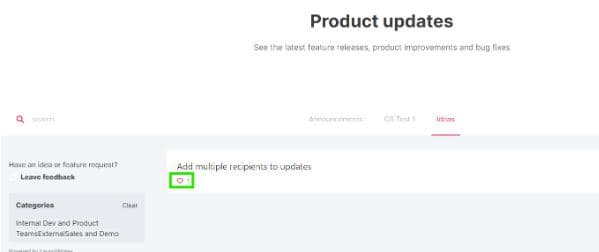
- Viewing the votes against the ideas submitted is easy and helps product teams prioritize user feedback. I know this seems like an obvious feature, but some tools don’t offer a simplified way of doing this, and LaunchNotes really excels here.
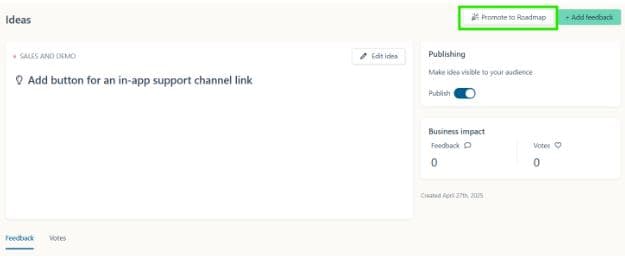
5. Other mentionable value-adds and features.
There is so much to like when it comes to LaunchNotes that I’d recommend trying out the free version if you’re looking for a new tool.
I won’t jump into further detail, but here are some other features that I loved using:
- Private Pages with SSO – LaunchNotes has an option to create your own page that offers security layers like SAML/SSO authentication, which I like. A lot of organizations will need to ensure you can ringfence sensitive information for targeted audiences and stakeholders.
- Dashboard and analytics – You can track details such as subscriptions, email engagement, page views, sentiments, and more, which makes this valuable to teams requiring some high-level overviews.
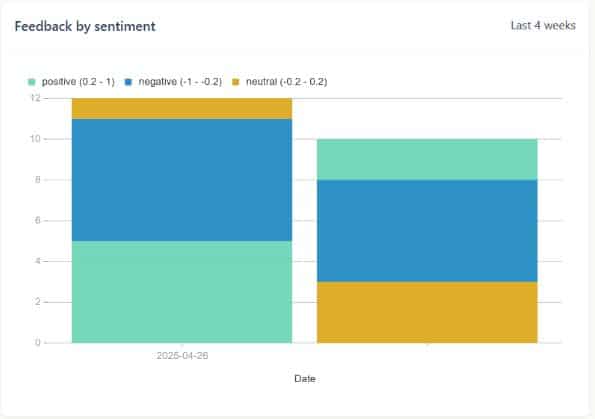
LaunchNotes Pricing
LaunchNotes offers a tier of 3 plans with flexible pricing. They do offer a free trial, which I’d highly recommend trying out if you need to see more of the feature sets and how they work!
Here’s a quick overview of what features are included. (To see more in-depth detail, click here.)
- Starter – Best for small teams
- Growth – Best for scale-ups and organizations with more advanced needs
- Premium – (Yearly plan only) – Best for enterprise-level organizations with multiple teams
Feature | Starter | Growth | Premium |
Pricing | $99/month or $948 annually | $299pm or $2988 annually | Custom – Annual billing only |
Users | Website does not state this | 2 users | 10+ users – Custom |
Roadmap | – | Yes | Yes |
Announcements | – | Yes | Yes |
Feedback | – | Yes | Yes |
Customizations | – | 1 custom domain 1 custom ESP LaunchNotes ESP up to 5,000/month Full HTML customization | All features in the Growth plan PLUS: 2 custom domains Custom subdirectory and more advanced features |
Support | GDPR compliance and email support only | GDPR compliance and email support only | Advanced support options, including chat support and custom SLA. |
Integrations | – | Yes (Limited) | Yes – Includes a wide range of integration options, including Slack, Jira, Loom, and more |
API | Only API Read Tokens | API Read Tokens and advanced API features | All API features in the Growth plan, PLUS subscriber export |
LaunchNotes takes the busywork out of product updates. Paste in your notes or tickets and get a structured announcement draft instantly. It’s designed for teams that want to save time, segment updates, and keep communication consistent across every channel.
LaunchNotes Pros and Cons
I had to dig deep here. There is so much to like about LaunchNotes, but there are some features I really hope they improve in the future.
Feature | Pros | Cons |
Ease of use on the roadmap | Adding items and setting up a roadmap is easy | Reloading the screen is required to see new items on your roadmap. |
Email sending platform | You can use LaunchNotes or your own ESP to send communications. | May offer less insight and analytics than advanced Email Deliverability tools to send communications. |
Roadmap features | Kanban and list views with drag and drop options | – Limited information is available at the surface level, including assignee, due dates, and labels. – No automation for workflows. |
Dashboards and reports | Dashboard overview for insights across a wide range of features | Can be limited for teams that need a granular view or advanced in-depth analytics. |
Pricing | Tiered pricing plans are available. Flexible pricing structure for monthly or annual commitments | – It can be too costly for smaller organizations that require more user seats and features. – Higher cost compared to competitor platforms.. |
In summary, I really like LaunchNotes; it took only a few minutes to get the hang of the platform and set up all my company information and customize key details. I found the platform exceptionally intuitive, and I find they’re constantly releasing new features which I’m excited to look out for. It has all the advanced features that would make this an excellent option for scale-up businesses or enterprise organizations that need to manage complex product updates and multiple teams. It can be on the costly side for smaller organizations, though.

